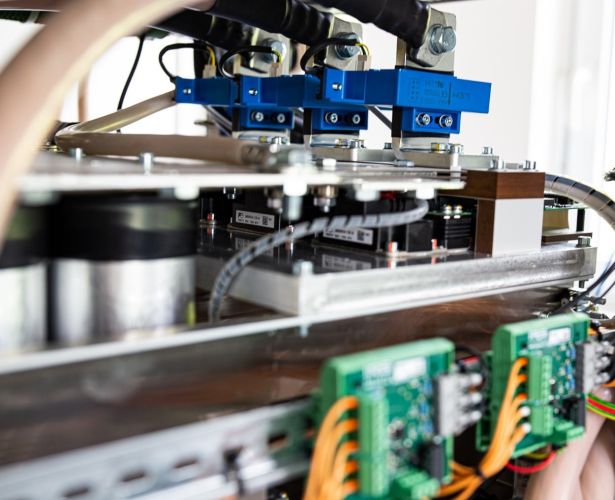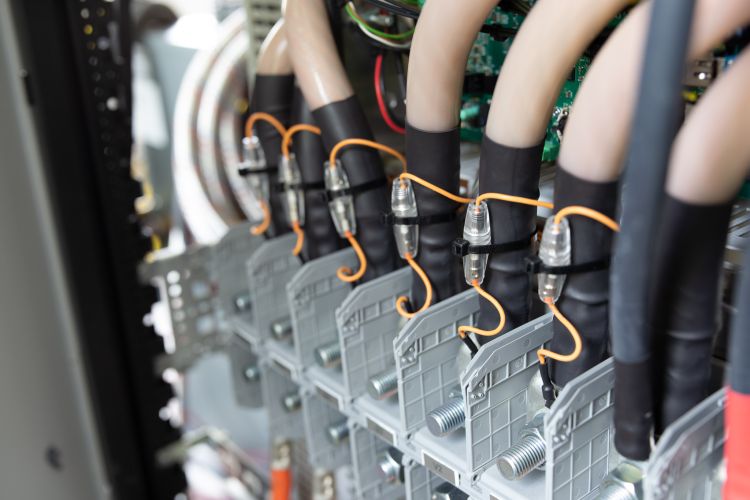Introduction
One of the central components of electrical or hybrid vehicles is the inverter – the device that converts DC voltage from the battery into AC currents for the electrical motor. Thus, testing inverters requires basically a battery simulation and a motor simulation.
Battery simulations are available on the market. Depending on the parameters, either standard power supplies with or without grid feedback or specific powerful battery simulations may be applied.
To simulate the motor there are usually two options: simple passive load or a full-size motor simulator.
The passive coil solution is very common in all fields of test in production, validation, and laboratory equipment. It is cost-efficient, simple, but with the drawbacks mentioned in the table below. Low DC current has the advantage, that relatively small power supplies can be applied, but the DC-path of the inverter is not tested under real conditions.
For Electronic motor simulations, the assortment is much more limited. For high power inverters with more than 100kW, highly sophisticated motor simulators are available from only few companies at prices well over 500.000 EUR. For many applications, the functionality of these simulators is oversized, e.g. in production lines or lifetime tests. In the latter, several inverters must be tested in parallel, resulting in the need of many motor simulations. Thus, in lifetime tests usually the simple coil solution is applied.
IRS provides a cost-efficient motor simulation, where real currents are simulated including realistic battery current and where recuperation is possible. But still the current drawn from the battery simulator has only to cover the losses of the system.
- Cost-efficient motor simulator for motors in the range of 10kW to 400kW
- Wide voltage range 30V to 1000V DC for BEV, PHEV or MHEV inverters
- Realistic currents both on motor and battery connections of the inverter
- Motor and recuperation operation
- Low current consumption from the battery simulator
- 6-phase motor simulation available
Technical Description
The concept is based on the idea to directly run two inverters against each other – both three phases and the DC-Link are directly coupled.
As battery simulator a standard power supply may be used.
With appropriate control of the motor simulator, the phase current flows from DUT to simulator via the phase coils and back to the DUT via the DC-Link, and vice versa.
Thus, the DC-Link is stressed with a realistic current, but since the energy is flowing between the two inverters, the battery simulation has only to provide the energy for the losses of the entire system.
This is one of the most important benefits: a relatively small power supply without energy feedback to the grid can be used.
With a power supply of only 20kW, motors of about 250kW can be simulated.
In most setups, the simulator generates the induced voltage of the motor and the DUT is in current control mode, defining the applied torque to the motor.
Advantages
IRS provides a cost-efficient motor simulation, where real currents are simulated including realistic battery current and where recuperation is possible. But still the current drawn from the battery simulator has only to cover the losses of the system.




